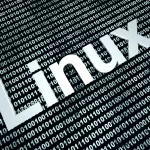Information technology vs. information management technology
In the realm of business operations, the terms “Information Technology” (IT) and “Information Management Technology” (IMT) are often used interchangeably, leading to confusion about their true meanings and implications. While they share some similarities, IT and IMT have distinct focuses and play different roles in managing and leveraging information within organizations. In this blog, we will delve into the differences between Information Technology and Information Management Technology, shedding light on their unique characteristics and highlighting their importance in the business landscape.
Information Technology (IT): Information Technology refers to the hardware, software, and technical infrastructure that enable the processing, storage, retrieval, and transmission of digital information. IT encompasses a wide range of technologies and systems that businesses employ to support their operations, improve efficiency, and enhance decision-making processes. Key components of IT include computer systems, networks, databases, software applications, and cybersecurity measures.
The primary objectives of IT include:
- Infrastructure and Systems: IT focuses on building and maintaining the technological foundation of an organization, including hardware, software, and networks. It involves managing servers, ensuring data storage and backup, establishing reliable networks, and maintaining the overall IT infrastructure.
- Technical Support: IT professionals provide technical assistance and support to employees, troubleshooting hardware and software issues, resolving network problems, and ensuring the smooth functioning of IT systems. Help desks and IT service teams play a crucial role in addressing user concerns and maintaining operational efficiency.
- Application Development: IT teams develop and maintain software applications that serve specific business needs. This includes custom software development, off-the-shelf software implementation, and integration of different systems to streamline processes and enhance productivity.
Information Management Technology (IMT): Information Management Technology, on the other hand, focuses on the strategic management and utilization of information assets within an organization. IMT involves processes, practices, and tools that enable effective information governance, data stewardship, and knowledge management. It goes beyond the technical aspects of IT and encompasses the broader management of information resources.
Key aspects of Information Management Technology include:
- Data Governance: IMT ensures the development and implementation of policies, procedures, and frameworks for managing and protecting organizational data. It involves establishing data standards, defining data ownership, ensuring data quality, and enforcing compliance with regulations.
- Information Lifecycle Management: IMT covers the entire lifecycle of information, from creation to disposal. It involves processes such as data capture, storage, retrieval, preservation, and archival. IMT professionals develop strategies for efficient information handling, including classification, indexing, and metadata management.
- Knowledge Management: IMT focuses on capturing, organizing, and sharing organizational knowledge to facilitate decision-making and improve operational efficiency. It involves tools and practices for knowledge creation, storage, retrieval, and collaboration. IMT professionals may implement knowledge management systems, intranets, and content management platforms to support these efforts.
- Information Security and Privacy: IMT incorporates information security and privacy practices to protect sensitive data from unauthorized access, breaches, and data loss. This includes implementing access controls, encryption techniques, identity management systems, and ensuring compliance with data protection regulations.































